20 December 2010
GoSF2: Basalt
Posted by Callan Bentley
“GoSF” = Geology of San Francisco
I’m going to write up my three field trips examining the geology of San Francisco and neighboring areas now. My plan is to cover:
Seafloor basalt (today)
Kirby Cove, Marin Headlands
(wildlife interlude)
Graywacke turbidites
Serpentinite and mélange
Fractures and the chemistry along them
Pleistocene dunes
The San Andreas Fault and Mussel Rock
So today’s topic is basalt. As we learned yesterday, the rocks of San Francisco are a smushed-up complex of different oceanic rock types, much as is the Virginia Piedmont.
One of the most striking of these rock types is the basalt which made up the Farallon Plate itself. Though most of the Farallon was subducted, there were thin slices which got slivered off and piled up on the edge of the North American continent as ophiolites. One of the distinctive features of these oceanic basalts is the presence of pillow basalts, tubelike structures that result when basaltic lava erupts underwater. (You may recall that I saw some in Turkey in October.) Here’s one, with my new cm-scale pencil for scale:
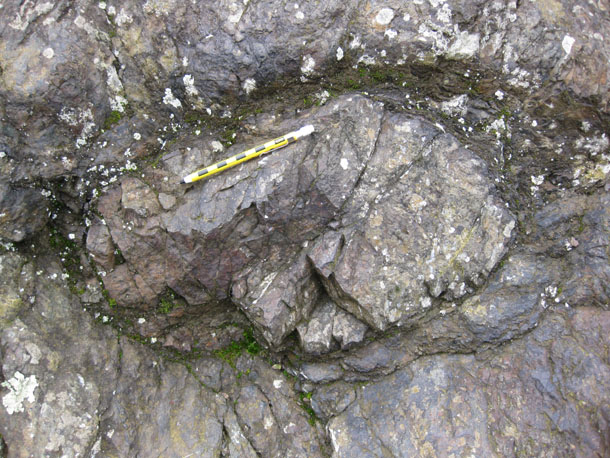
And another:
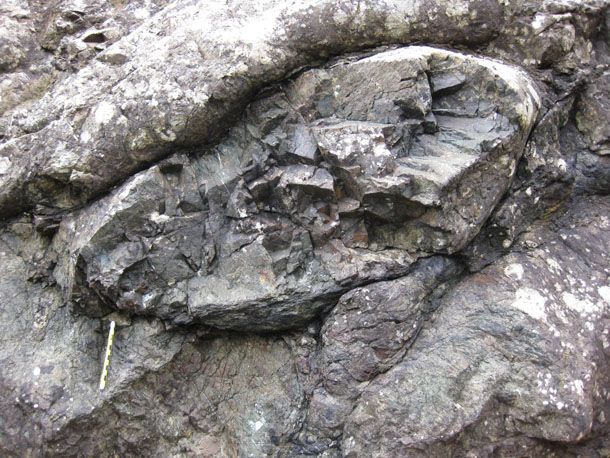
Notice how they have a flattened elliptical shape in cross-section? The long axis of this ellipse is approximately paleo-horizontal.
Here’s one that has weathered out partially in cross-section, and partially in its true three-dimensional shape:
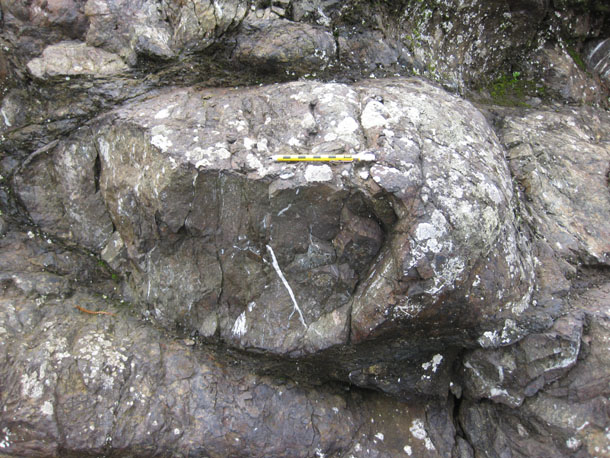
Though they are present in plenty of locations on the Marin Headlands, the best pillow basalts I saw were at Point Bonita, a peninsula of land projecting south from the Marin Headlands into the sloshing waves of the Golden Gate. Katryn Wiese brought the two-year college group out there. Here she is pointing out some chert in between the pillows in a big pile of pillow basalt:
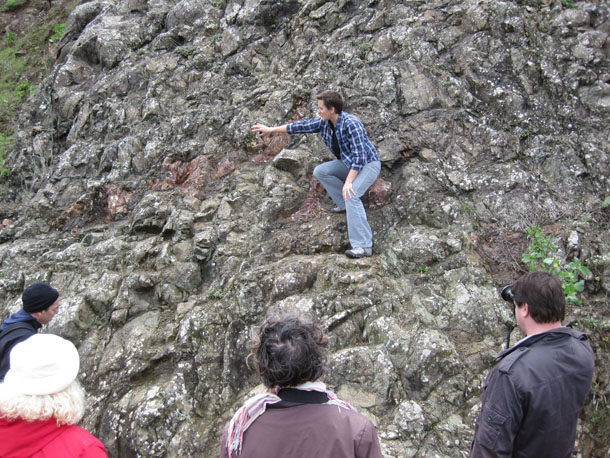
Here’s the path out to the lighthouse at the tip of Point Bonita:
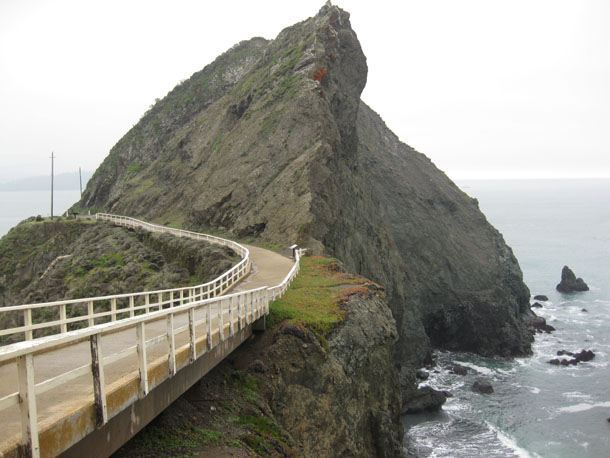
To make it out to the end of Point Bonita, we had to have the park service unlock this door to a tunnel that leads out to the point:

The orange stuff on the cliff is apparently a green alga (taxonomically, not in terms of its actual color. Not all green algae are green, just like not all members of the Order Carnivora are dietary carnivores.)
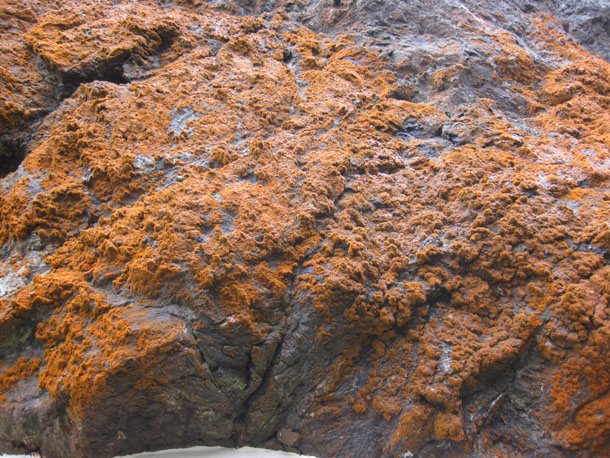
Just past the tunnel, we got a look at a more diverse suite of lichens growing all over the rock, and obscuring the pillows:

(See? It’s not just the east coast where the rocks are obscured by pesky lifeforms! What we need here is a constant barrage by Pacific Ocean waves to clean off this surface and reveal the rocks beneath…)
Our destination was the Point Bonita lighthouse area, where waves smashing into the headlands have exposed fresh pillow basalts, and to add icing to the proverbial cake, have sculpted them into a sea arch:
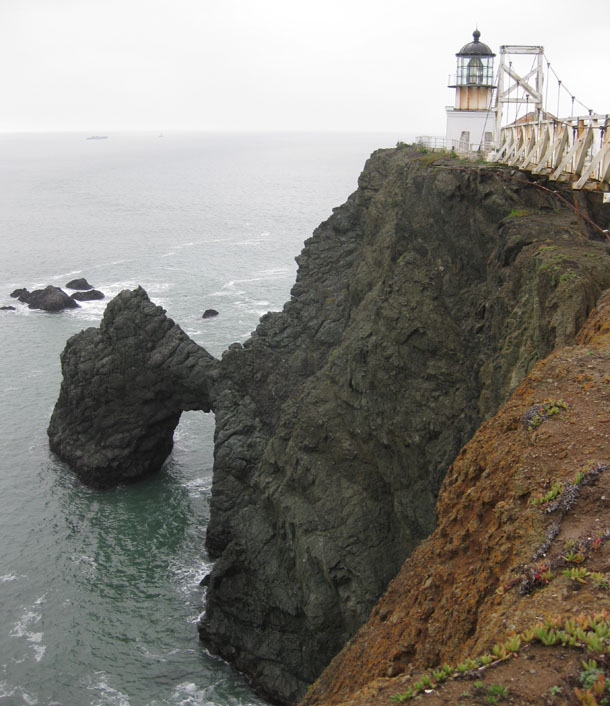
How freaking awesome is that? A sea arch made of pillow basalts!
Conveniently, Katryn had arranged for a kayaker to come by and paddle under the arch during our observation, so we had a natural sense of scale for the pillow basalts that make up the arch:
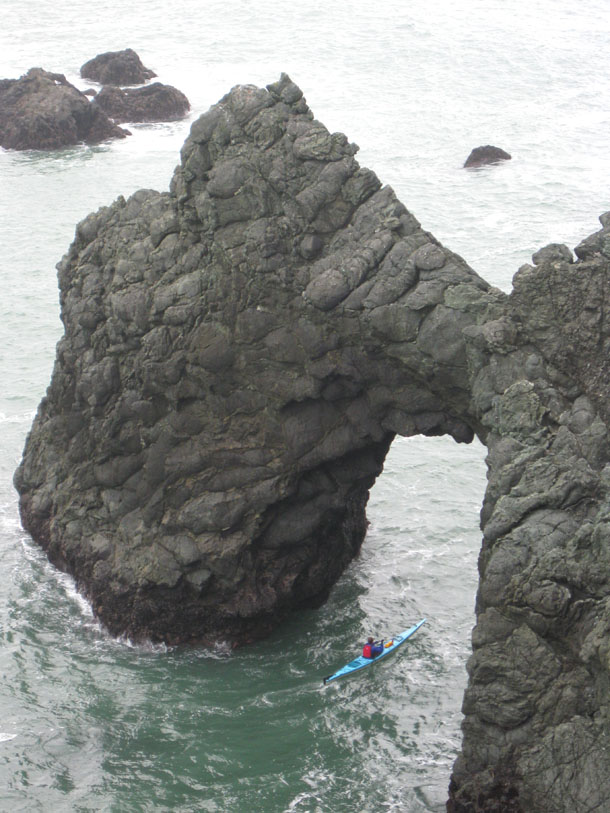
Participants on our field trip described this arch as looking as if it were made of “turds” or “feces” (actual quotes). This analogy is a bit gross, but I have to admit that it does justice to the tube-shape of the pillows. The cross-sectional ellipses don’t quite convey the squirmy shapes of these things.
Here’s a few more shots of other pillows I saw in the Marin Headlands Terrane:

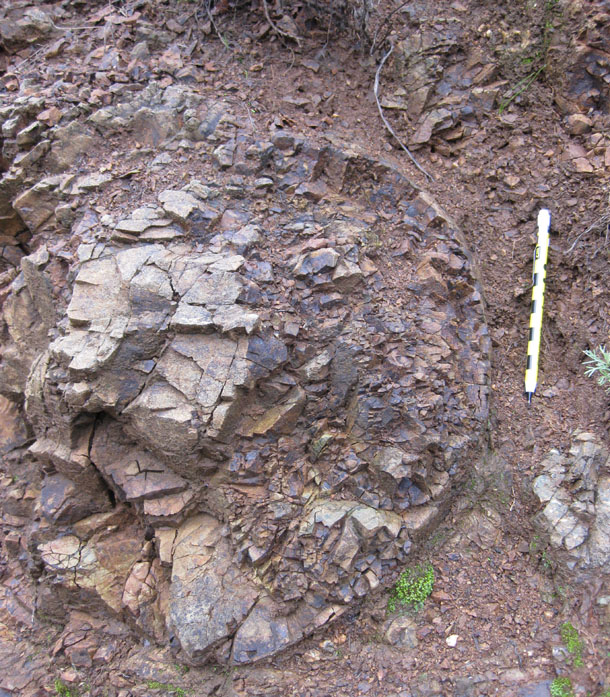

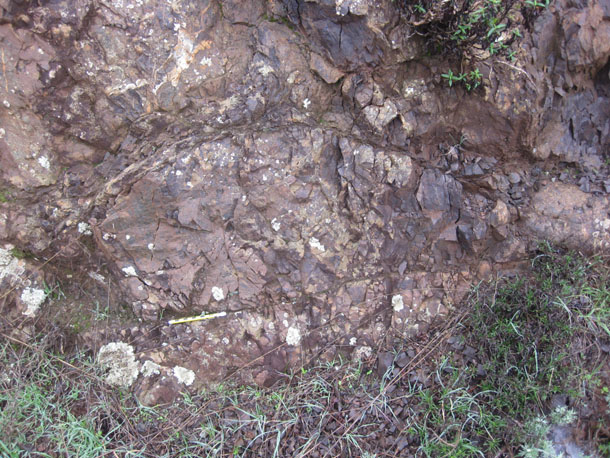
Next up: the cherts that overlie the seafloor pillows…


 Callan Bentley is Associate Professor of Geology at Piedmont Virginia Community College in Charlottesville, Virginia. He is a Fellow of the Geological Society of America. For his work on this blog, the National Association of Geoscience Teachers recognized him with the James Shea Award. He has also won the Outstanding Faculty Award from the State Council on Higher Education in Virginia, and the Biggs Award for Excellence in Geoscience Teaching from the Geoscience Education Division of the Geological Society of America. In previous years, Callan served as a contributing editor at EARTH magazine, President of the Geological Society of Washington and President the Geo2YC division of NAGT.
Callan Bentley is Associate Professor of Geology at Piedmont Virginia Community College in Charlottesville, Virginia. He is a Fellow of the Geological Society of America. For his work on this blog, the National Association of Geoscience Teachers recognized him with the James Shea Award. He has also won the Outstanding Faculty Award from the State Council on Higher Education in Virginia, and the Biggs Award for Excellence in Geoscience Teaching from the Geoscience Education Division of the Geological Society of America. In previous years, Callan served as a contributing editor at EARTH magazine, President of the Geological Society of Washington and President the Geo2YC division of NAGT.
I’m lovin’ this series. I’ll be loading it on my smart phone for new field trips. Did someone cover Mount Diablo? That place is making me crazy. Thanks for your blog.
[…] Seafloor basalt […]